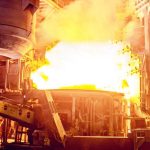
Introduction
The design and development of high-performance refractories are fundamental to ensuring the efficiency and reliability of industrial processes involving extreme temperatures and harsh conditions. Refractory materials must withstand intense heat, chemical attack, and mechanical stress. Phase diagrams are essential tools in this process, providing valuable insights into the behavior and properties of refractory materials. This blog explores the role of phase diagrams in designing high-performance refractories and how they contribute to the development of materials that excel in demanding environments.
Understanding Phase Diagrams
Phase diagrams, also known as equilibrium diagrams, are graphical representations of the phases present in a material system as a function of temperature, pressure, and composition. They illustrate the stability of different phases (solid, liquid, gas) and their transitions under varying conditions. In the context of refractory materials, phase diagrams provide critical information about phase relationships, melting points, and solubility limits.
Key Aspects of Phase Diagrams in Refractory Design
- Identification of Stable Phases:
Phase diagrams help identify the stable phases present in a refractory material at different temperatures and compositions. Understanding these phases allows engineers to select materials that will perform optimally under specific operating conditions. - Optimizing Material Composition:
By analyzing phase diagrams, designers can optimize the composition of refractory materials to achieve desired properties. For example, adjusting the ratio of different oxides or additives based on phase diagram data can enhance properties such as thermal stability, chemical resistance, and mechanical strength. - Predicting Melting Points and Phase Transitions:
Phase diagrams provide information on the melting points and phase transitions of refractory materials. This information is crucial for selecting materials that can withstand the high temperatures encountered in industrial processes without melting or undergoing undesirable phase changes. - Understanding Solid Solution Formation:
Phase diagrams reveal the formation of solid solutions, where different components mix at the atomic level to form a single phase. This understanding helps in designing refractories with tailored properties, such as improved thermal conductivity or enhanced resistance to chemical attack. - Assessing Phase Stability:
The stability of phases at various temperatures and compositions is critical for the performance of refractories. Phase diagrams help assess which phases are stable or metastable, ensuring that the refractory material maintains its integrity and performance throughout its service life.

Applications of Phase Diagrams in Refractory Design
- Development of New Refractory Materials:
Phase diagrams are used in the research and development of new refractory materials. By analyzing phase relationships and transitions, scientists and engineers can design materials with improved performance characteristics tailored to specific industrial applications. - Optimizing Existing Refractory Formulations:
For existing refractory formulations, phase diagrams can be used to fine-tune compositions and processing conditions. This optimization improves the material’s performance, extends its service life, and reduces the need for frequent replacements. - Quality Control and Performance Assessment:
In quality control, phase diagrams help verify that refractory materials meet the required specifications. By comparing the observed phase relationships with theoretical predictions, manufacturers can ensure that their products perform consistently and reliably. - Troubleshooting and Problem Solving:
Phase diagrams are valuable tools for troubleshooting issues related to refractory performance. If a refractory material exhibits unexpected behavior or failure, phase diagrams can help identify potential causes and guide adjustments to the material composition or processing conditions.
Case Study: MgO-C Refractories
A practical example of phase diagrams in refractory design is the development of MgO-C (Magnesia-Carbon) refractories. By studying the phase diagrams of MgO-C systems, engineers can understand the interactions between magnesia, carbon, and other additives. This knowledge allows for the optimization of properties such as thermal shock resistance, chemical corrosion resistance, and mechanical strength, resulting in high-performance refractories suitable for demanding steelmaking applications.
Conclusion
Phase diagrams play a critical role in the design and development of high-performance refractories. By providing insights into phase relationships, melting points, and stability, phase diagrams enable engineers to optimize material compositions, predict performance, and improve the reliability of refractories in extreme conditions. At Pennekamp Middle East, we leverage phase diagram analysis to develop and refine refractory materials that meet the rigorous demands of modern industrial processes, ensuring superior performance and durability in every application.












